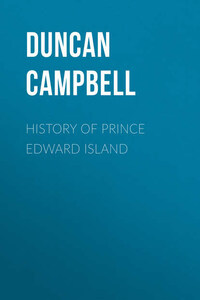The principal aim of the Author has been to produce a History of Prince Edward Island, which might claim some degree of merit as to conciseness, accuracy, and impartiality, from the period it became a British possession until its recent union with the other confederated provinces of British North America. With the view to secure these ends, it was necessary that not only all available books and pamphlets relating to the island should be attentively perused, and the correctness of their statements tested; but that a vast mass of original papers, hitherto unpublished, should be carefully examined. Application having been made to His Excellency Lord Dufferin, through Sir Robert Hodgson, the Lieutenant-governor of the island, permission was granted to examine all the numerical despatches. This task imposed an amount of labor which had not been anticipated, and which seemed incompatible with the production of so small a volume. The Author is aware that there lies in the French archives at Paris a large deposit of interesting matter bearing on the history of the Maritime Provinces, and it is to be hoped that it will soon be rendered accessible to the English reader.
It was necessary that a considerable portion of the work should deal with the Land Question. To its consideration the Author came in comparative ignorance of the entire subject, and therefore unprejudiced by ideas and associations of which it might be impossible for a native of the island entirely to divest himself. The soundness of the conclusions arrived at may be questioned; but it can be truly said that they have not been reached without deliberate consideration, and an anxious desire to arrive at the truth.
The Author desires to express his special obligations for valuable matter to His Honor Sir Robert Hodgson, the Honorable Judge Pope, Professor Caven, Mr. Henry Lawson, the Honorable Judge Hensley, the Honorable Mr. Haviland, Mr. John Ings, Hon. Francis Longworth, Mr. J. B. Cooper, Mr. Arthur DeW. Haszard, Mr. Donald Currie, the Reverend Mr. McNeill, Mr. T. B. Aitkins, of Halifax, Mr. John Ball, Mr. F. W. Hughes, the Reverend Dr. Jenkins, Mr. Charles DesBrisay, Mr. J. W. Morrison, and others too numerous to mention.
The Honorable Judge Pope possesses rare and most important documents connected with the island, without which it would have been impossible to produce a satisfactory narrative, and which he at once courteously placed at the temporary disposal of the Author, rendering further service by the remarkable extent and accuracy of his information.
The Author has also to thank the People of Prince Edward Island, especially, for the confidence reposed in him, as proved by the fact of his having received, in the course of a few weeks, orders for his then unpublished work to the number of more than two thousand seven hundred copies, – confidence which he hopes an unprejudiced perusal of the book may, to some extent, justify.
Charlottetown, October, 1875.
Geographical position of the Island – Early possession – Population in 1758 – Cession by Treaty of Fontainebleau – Survey of Captain Holland – Holland’s description of the Island – Position of Town sites – Climate – The Earl of Egmont’s scheme of settlement – Proposed division of the Island – Memorials of Egmont – Decision of the British Government respecting Egmont’s Scheme.
Prince Edward Island is situated in the Gulf of Saint Lawrence. It lies between 46° and 47° 7’ north latitude, and 62° and 64° 27’ longitude west, from Greenwich. As viewed from the north-east, it presents the form of a crescent. Its length, in a course through the centre of the Island, is about one hundred and forty miles, and its breadth, in the widest part, which is from Beacon Point to East Point, towards its eastern extremity, thirty-four miles. It is separated from Nova Scotia by the Strait of Northumberland, which is only nine miles broad between Cape Traverse and Cape Tormentine. From the Island of Cape Breton it is distant twenty-seven miles, and from the nearest point of Newfoundland one hundred and twenty-five miles.
The Island was amongst the first discoveries of the celebrated navigator, Cabot, who named it Saint John, as indicative of the day of its discovery. Britain failing to lay claim to it, the French afterwards assumed it as part of the discoveries made by Verazani in 1523. In 1663 it was granted, with other Islands, by the Company of New France, to the Sieur Doublet, a captain in the French navy, with whom were associated two adventurers who established a few fishing stations, but who did not reside permanently on the island.
In the year 1713 Anne, the Queen of Great Britain, and Louis XIV, the King of France, concluded the celebrated treaty of Utrecht, by which Acadia and Newfoundland were ceded to Great Britain. The fourteenth article of that treaty provided that the French inhabitants of the ceded territory should be at liberty to remove within a year to any other place. Many of the Acadians, availing themselves of this liberty, removed to the Island of Saint John, which was then under French rule. Subsequently a French officer, who received his instructions from the Governor of Cape Breton, resided with a garrison of sixty men at Port la Joie (Charlottetown).








